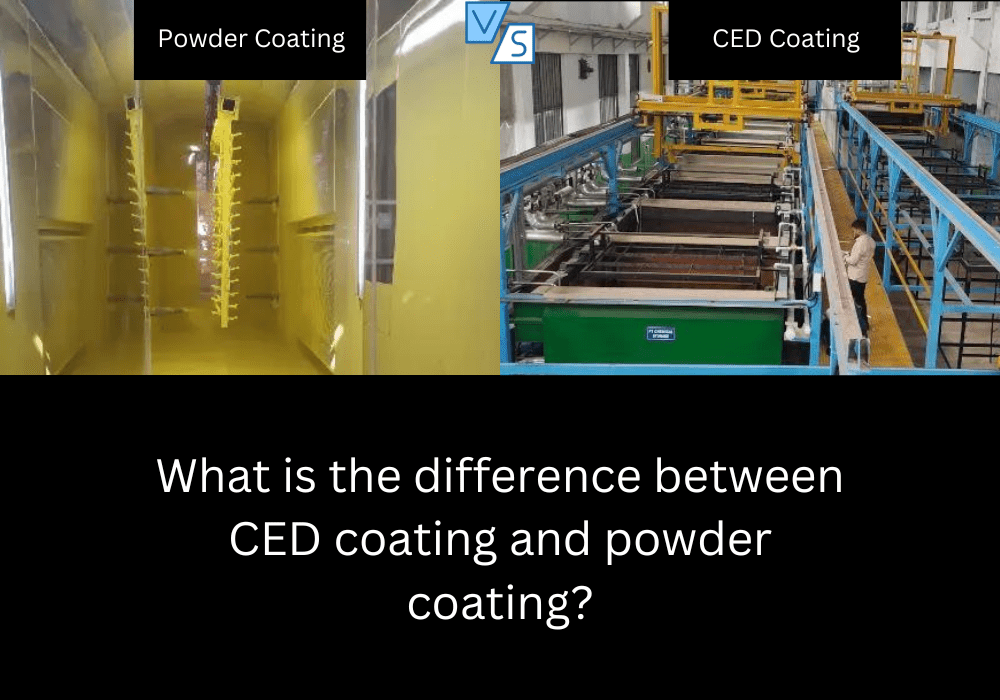CED (Cathodic Electrodeposition) coating and powder coating are two distinct methods of applying protective coatings to various surfaces, typically for corrosion resistance and aesthetic purposes. Here are the key differences between CED coating and powder coating:
- Application Method:
- CED Coating: CED coating, also known as electrophoretic deposition or electrocoating, is an immersion process in which the object to be coated is immersed in a tank filled with a water-based paint solution. An electrical charge is applied, causing the paint particles to migrate and deposit onto the object’s surface. This process typically results in a uniform and consistent coating.
- Powder Coating: Powder coating involves spraying a dry, finely ground powder coating material (usually a thermosetting polymer) onto the surface of the object to be coated. The powder adheres electrostatically to the surface, and then the object is heated to fuse and cure the powder, forming a durable coating.
- Coating Material:
- CED Coating: CED coatings use water-based paint solutions containing pigments and resins. These coatings can be customized for specific applications and can provide excellent corrosion protection.
- Powder Coating: Powder coatings are typically made of thermosetting polymers in powder form. They come in a wide range of colors and finishes, and the choice of powder can be tailored to meet specific requirements.
- Thickness and Uniformity:
- CED Coating: CED coatings tend to be very uniform and can provide precise control over the thickness of the coating. They can be applied in a way that minimizes waste.
- Powder Coating: The thickness of a powder coating can be adjusted, but it may be more challenging to achieve extremely uniform coverage, especially on complex shapes. Over-application or under-application of the powder may occur.
- Environmental Considerations:
- CED Coating: CED coatings are considered more environmentally friendly compared to many other coating methods because they use water-based paint solutions, which generally have lower levels of volatile organic compounds (VOCs) and hazardous air pollutants (HAPs).
- Powder Coating: Powder coatings are also relatively environmentally friendly, as they do not contain solvents and produce minimal air pollution. However, they may have some waste associated with overspray.
- Flexibility and Finish:
- CED Coating: CED coatings are typically used for corrosion protection and may have limited aesthetic options. They are often used as a primer coat in automotive and industrial applications.
- Powder Coating: Powder coatings offer a wide range of color and finish options, making them suitable for both functional and decorative purposes. They are commonly used for items such as furniture, appliances, and automotive parts.
In summary, CED coating and powder coating are different methods of applying protective coatings, with distinct advantages and applications. CED coating is favored for its uniformity and corrosion resistance, while powder coating is known for its versatility in terms of color and finish options. The choice between the two methods depends on the specific requirements of the application.

